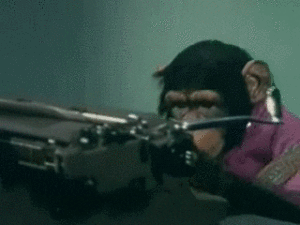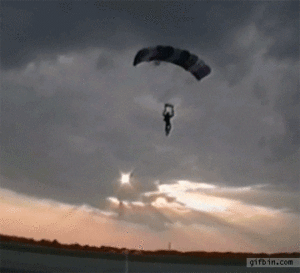It has happened to me. It almost certainly has happened to you.
You are writing your latest masterpiece. You’re speeding right along. Your brain is spitting the words into your fingers and your fingers are tapping them onto the screen or onto the paper or whatever is working for you and then all of the lights on your creative dashboard go on signalling that your alternator has given up the ghost. Your metaphorical foot is mashing the pedal to the metal but your entire creative vehicle is losing power and coasting to a stop. What do you do?
The answer is easy. You quit writing. You get up from wherever you do your writing and decide to channel your energies elsewhere for the rest of your life. You grow a garden, clean your house, buy and manage properties, or engage in a different task. Let someone else bang their head against their wall in the slim hope that their stories will show up somewhere and sometime. Thanks! I’m done.
Actually, that’s not what you do.
What I just wrote is an example of a little writing trick which I picked up and modified from the novel Cujo by Stephen King. There is a noteworthy vignette that occurs in the final quarter of that book and which involves Cujo, a large and otherwise sweet St. Bernard dog who contracts rabies, and one of the story’s primary characters. King works the scene for all that it is worth. He rachets up the suspense to eleven and then inserts a bunch of short sentences that resolve the scene and the novel quickly and happily. He follows that with a single sentence which yanks the rug out from under the reader, stating that what he said happened did not happen at all. The story rolls horrifically on from there. The reader intuitively knows all along that King is wolfing, since there are sixty or seventy more pages to go when he supposedly ends the book, but it is a surprise followed by a surprise and sets the reader up for more.
I call this “the Cujo method” and I have been using it frequently while slowly writing a genre-straddling love story with the working title of The Lake Effect. I have not just been swerving out of my creative lane while doing this. Rather, I have drifted across four eastbound lanes, gone over the rumble strip and the highway shoulder, careened through a guard rail, and dropped off of an overpass posterior over teakettle before ultimately landing on a northbound train which will crash unless I can answer an unanswerable riddle (that’s a reference to another King novel).
It was not always thus. I wrote the first three and final six chapters of The Lake Effect months ago, and they’re not bad at all. I surprised myself. The middle of the book, however — no surprise here — has been a stiff-legged march through several quicksand mires. I have managed to pull myself out each time by utilizing the Cujo method.
Here is an example of what I have been doing. One of the pivotal events of The Lake Effect involves a U.S. Army paratrooper who during World War II is involved in the Allied invasion of northern France on June 6, 1945. He jumps without incident but finds when he lands that he has drifted somewhat off-course. He finds himself in a graveyard where he gets the first few hints that he is not where he is supposed to be. His landing also attracts some unwanted attention. The local authorities come looking for him as a result. The owner of a farm adjoining the graveyard is a widow who is still dealing with the unexpected death of her husband. She happens to find the paratrooper before he finds her. They each think that the other is someone else. The authorities, meanwhile, come ever closer.
I wasn’t sure what was going to happen next. I already knew what was going to happen after several more pages, but I had to jump fence or two to get there. I couldn’t think of a good way to do it. So I utilized the Cujo method and wrote:
She yanked her grandfather’s rifle off of the wall and shot the soldier dead even as he pleaded for his life. The End.
He pulled his Colt .45 pistol out and grimaced as he shot her while her back was turned. He stood over her body and waited for his pursuers to enter the farmhouse, determined to take as many of them as he could before he followed them into hell. The End.
She hid him from the troops in a second, unfinished root cellar that her husband had dug but not completed by the time of his death. Afterward, the two of them surrendered to the passion that had been tugging at them, resulting in a tender moment which became another and then another and yet another. They lived on the farm for the rest of their lives, in conjugal if not lawfully wedded bliss. The End.
That of course is not ultimately what happened. What did happen is that I got the concrete out from between my ears and was able to move forward. I of course removed the whimsy once it had served its purpose and I got rolling again. The preceding three paragraphs will never see the light of day (whoops…wait a minute…). The best part is that while I was typing these alternative premature endings I thought of a plausible way to keep things going that wouldn’t make a reader, agent or editor go “Hmmm.” It took a bit of work to get that just right but at least I had a “that” to get right, which was more than I had when I stepped in the story quicksand. I think it may have had more to do with the act of continuing to slog forward. Erle Stanley Gardner, who was one of the twentieth century’s most popular and most prolific authors, would work the keys on his manual typewriter under his fingers bled, bandage them up, and go for more. That, I think, is how the job ultimately is done. For whatever reason, my method works for me. Maybe it will for you. Something will. You just need to find it. Good luck!
For anyone interested…I listened to the following while writing this:
Hey Ya — Surfer Blood
American Specialties (full album) — Parquet Courts
Heartbreaker — Dionne Warwick
Stayin’ Alive — Bee Gees
Mr. Dyingly Sad — The Critters
Cry to Me — Solomon Burke
Blood and Roses — The Smithereens
Hold On — Alabama Shakes
The Lost Septet (Live) (full album) — Miles Davis
Backsliding Fearlessly — Mott the Hoople
Under Pressure — Queen, David Bowie
Money Talks — AC/DC
Enjoy. Thanks for being here and for letting me be a part of your day.
Media, whether working of not, is courtesy of giphy.com





Good morning, Joe
Good to see you back. Interesting post. I like your technique. Like movies with outtakes at the end, you could put all those scenes in a final chapter for readers’ amusement, or even slip in a cliff hanger for your next book.
One of the neat things about writing fantasy is that you can create anything to support that sagging middle. The crazier and stranger, the better. Your imagination is your only limitation. It’s great fun for those of us who live on that fine line between genius and insanity. Only our family knows on which side of the line we really reside.
Have a great Labor Day weekend.
FIRST! Good morning, Steve, and thank you. It’s good to be back.
I love your point about movie outtakes. They show the shaft of the spear of the creative process. It’s a long slog to the tip and it’s not done in the first take.
Hope you have a great Labor Day as well! Thanks again.
I am definitely going to have to give this a try. I joke with one of my crit partners when I reach either that “this book will NEVER end” or the “How will this ever be long enough to be a book?” point in my writing, that I’m going to say, “And they found the bad guy and put him in jail. The End.” Or, for one of my romantic suspense books, “They resolved the bad stuff, admitted they were meant to be together. The End.”
Terry, I love it! Great minds run in the same channel. Thanks.
I like this idea for unsticking yourself when writing. I think it would be a fun exercise just for kicks, too.
Priscilla, you’re right. It’s a fun exercise even if you don’t need to do it. Thank you.
Love your Cujo Method, Joe! Sounds like a great way to get the creative juices flowing. It also sounds a lot less painful than my method: scroll back several chapters and read, edit, rewrite with the hope that by the time I near my sticking point the words will flow. Alas, it works for me. But next time, I’ll be sure to try Cujo. 🙂
Thanks, Sue! I hope it works for you. For me, it’s kind of like hitting the “refresh” button creatively, whether I need to or not. It doesn’t always solve the problem, but it jiggles the thought process a bit.
Good blog, Joe. And you’ve made the writing process an exciting read — a real feat. Thanks for the inspiration
Thank you so much, Elaine. You’re very kind. Hope Don is feeling better.
Hey, Joe! Great post…
I’m with everyone else this morning. Gonna give this a try. (Actually, now that I think about it, I already did with my current WIP which will release this year…hoping, anyway.) The first ending was kinda *meh*, so one day I added two more scenes to it, spit-polished them, then sent it to my editor while biting my nails. I was sure she’d nix it because it was a bit off the rails. But she loved it!
I have my next WIP (and the next, and the next…) and I will definitely invite that St. Bernard into my office. Maybe I’ll even give him a bone or two to encourage the relationship! 🙂
Thanks, Deb. You’re very kind. I hope it works well for you.
I found out the hard way that if you give a St. Bernard a bone you need to have plastic down on the floor to catch the drool!
Funny you should say that, Joe. When I was about 16, I dogsat for neighbors down the street. They had two St. Bernards that they kept in a rumpus room off their garage.
If I only could have bottled and sold the drool I’d be rollin’ today (in money, not on the floor…)
Alas, I came to loathe those dogs.
Hi Joe, glad to have you back.
I’ve never tried the Cujo method but, b/c you recommend it, I’ll give it a whirl at the next roadblock in my WIP.
A while back, you talked about how changing fonts to Comic Sans could improve creativity. Nah, that’s silly, I thought…until I tried it. After that revelation, I’ll try any tip you recommend…short of eating kale.
Have you heard this one by Solomon Burke and Jerry Lee Lewis: https://www.youtube.com/watch?v=2sxq32bISg0
Thanks so much, Debbie. It’s great to be back and hear from nice folks like yourself. I’m happy that my suggestion about Comic Sans worked for you…hope Cujo does too! And don’t worry…I will NEVER suggest that anyone add kale to their regimen.
Also…I am FLABBERGASTED by that Solomon Burke/Jerry Lee Lewis collaboration! “Who Will the Next Fool Be,” one of my favorite songs by two of my favorite artists. And did I see Ron Wood and G.E. Smith in the band?! I also loved the exchange at the end…”Who will the next fool be?” “James Brown?” “I don’t think so…” Thanks so much…I will be playing that all day long!
Glad you like the duet. Yup, some heavy hitters on that stage.
May I suggest, from my Dutch forebears, boerenkool stamppot. Mix the kale with mashed potatoes and worst and maybe… garlic? onions? …
(Full disclosure: I also like brussels sprouts and broccoli)
Well, Eric, it kinda sounds like something that was created on a dare…but…throw in some pulled pork, CaJohn’s barbeque sauce, and some Cholula green pepper sauce and it just might work! Thanks!
An interesting and helpful post. Joe. I say if it worked for Stephen King it’s worth a try. Have a great weekend. 🙂 — Suzanne
Thank you, Suzette. I agree. It REALLY worked well in the book. It was like running into a wall in the dark and then breaking through into another room. You have a great weekend as well!
I like this idea. I think it would also be helpful if you’re writing a mystery and arguing with yourself over the progression of clues.
That is an excellent point, BK. Thanks for sharing!
Hi, Joe
Welcome back! I love this post! This is an awesome technique that I will absolute take for a spin. You gave a terrific rundown of how it works, and kudos for sharing your own examples, that really made the difference to me. Giving yourself multiple options/versions that can be very different from one another is brilliant.
I have used Chandler’s advice about sending a man in with gun when the story gets stuck. In my case, it was a medieval fantasy novel I was writing during National Novel Writing Month years ago, so the pressure was on. My plot had ground to a halt, so I sent in an assassin with a crossbow. Worked like a charm to get things moving. Didn’t make the novel pass muster (it’s in my metaphorical writers trunk), the plot still didn’t work, but that wasn’t the fault of Chandler’s tactic.
What I like about your approach is that you are giving yourself and your subconscious several choices, and you can choose the best one, or even come up with yet another, having goosed your subconscious in this process.
Have a wonderful Saturday!
Thank you, Dale! It’s great to be here. Nice to have you back as well.
I was unfamiliar with Chandler’s advice about sending a man in with a gun. I LOVE it! Thank you for sharing. I’m not stuck at the moment but it’s still a terrific idea.
I hope you open up that trunk and take another look at that WIP in another six to eight months. Good luck!
The way my brain works that would be the worst writing method ever. I’d stay at that false ending like it was a brick fence and count the bricks forever to figure my way past it.
I also couldn’t write a sandwich novel with the front and back in place before I wrote the middle baloney. Even as a outliner with general ideas of the plot that I fill in with controlled panstering, I am first and foremost an organic writer who must move forward from beginning to end, or the book is a zombie on the page and in my head.
When the writing stops, that means I don’t know where I want to go in the next scene, or I’ve lost my way. The cure can be as simple as figuring out what the point of the next scene is. What is that character’s goal in that scene, what do they need to learn, or who do they need some form of connection with? I write my points down, then I visualize the setting and go for it.
The more complex writing stop means I’ve lost my way. I back up a few chapters, reread them, figure out where the novel has swerved off track or find my direction, then I can move forward.
I’ve also gone back to my notes of the novel, particularly my Ben Bova schematic of plot vs character, and study the big picture of the novel to see where I’ve gone wrong.
A brief description of the Ben Bova Method:
http://mbyerly.blogspot.com/2016/09/using-index-cards-to-plot-your-novel.html
The only thing scarier than King’s horror is some of the writing advice he gives to authors because he thinks his way is the only way. It isn’t. Each writer must figure out what works for them.
Thanks for your comments, Marilynn, and for sharing the Ben Bova method.
For those of you who are unfamiliar with Bova, he is a “hard-science” science fiction author who has written over one hundred novels and also functioned as a go-to guy for other authors who wanted to get their stuff straight in their novels. He’s approaching age ninety and is still going strong, demonstrating that it is hard to hit a moving target. I want to be him when I grow up.
Pingback: Native American Crime Fiction, Punctuation, and Nikki Dolson - Unlawful Acts